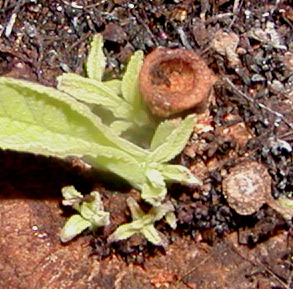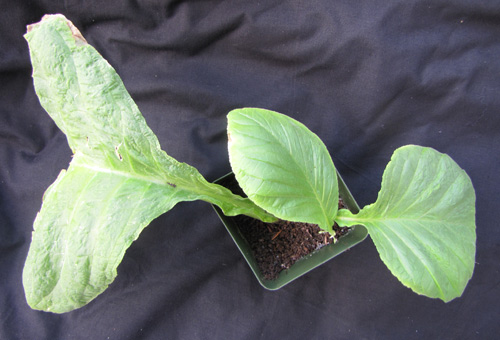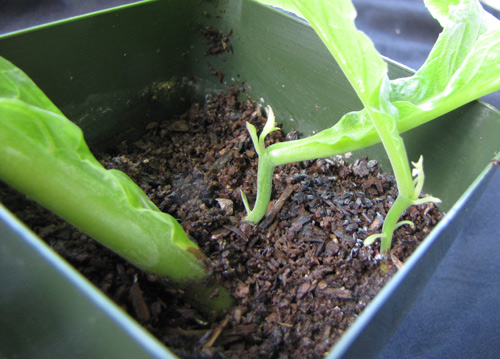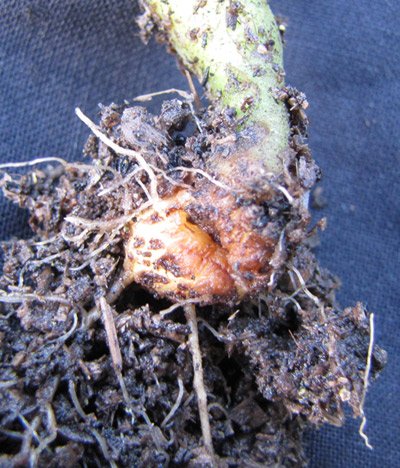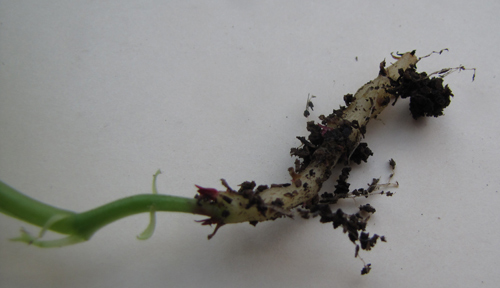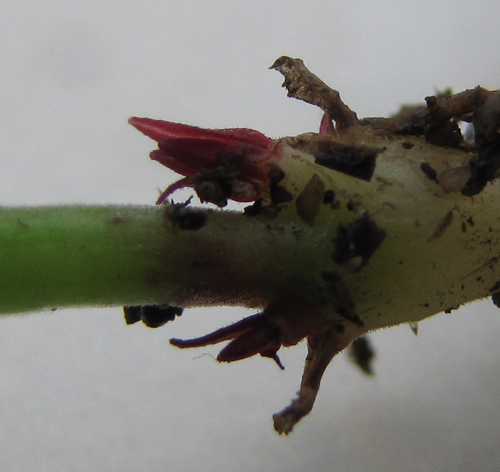Propagation of Sinningia defoliata
It is not obvious how to propagate Sinningia defoliata vegetatively, since it appears to have only a tuber plus one or more leaves. However, as we learned on the home page for this species, what looks like a simple leaf is actually a leaf at the end of a stem with one or more dormant buds. This gives us the machinery to do the propagation.
This picture shows the base of the leaf/stem, where it is anchored to the tuber. The small leaves mark the location of buds that will help in propagation.
